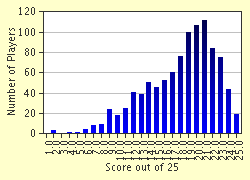Quiz Answer Key and Fun Facts
1. At the start of the European theatre in 1939, there were already two countries at war elsewhere. What were the two countries?
2. The offensives in Poland and France taught the English-speaking world a new word called "Blitzkrieg." What does it mean?
3. Which country denied much needed border access to the Soviets, thus finding itself at war against the Red Army?
4. Germany turned its aggression on its old foe France. Even with Allied help, France fell easily, leaving Britain to be the next target. A massive air battle soon followed. What was this battle called?
5. Italy decided to join Hitler's march of conquest in June 1940. Which Italian dictator was calling the shots?
6. German U-boat attacks threatened Britain's fragile economy by concentrating on shipping tonnage along which vital supply route?
7. Japan's day of infamy came with the attack on the American naval base at Pearl Harbor. In which year did this attack take place?
8. Which German general was sent to Tripoli ahead of his army to stem considerable Italian losses?
9. Which two British ships (one a battleship, the other a battlecruiser) were sent to Singapore to provide artillery support and to help prevent the Japanese invasion of Malaya (now Malaysia)?
10. Who was the British commander of the Allied forces in Malaya and Singapore?
11. In a surprise attack, three miniature Japanese submarines sneaked into which harbor sinking the HMAS Kuttabul?
12. British Admiralty knew the havoc the new German battleship Bismarck could inflict on allied shipping if it were to escape into the open sea. They therefore threw every available ship and plane into the hunt. The first engagement with the Bismarck would prove devastating to the Royal Navy when she sent which capital ship to the bottom?
13. Guadalcanal was the scene of some of the fiercest fighting in the Pacific. In which group of islands is Guadalcanal found?
14. Which of the following was NOT a Nazi concentration camp or extermination camp?
15. June 6, 1944, D-Day: The longest day in WWII. What was the code name for the invasion of France, which started with the Allied landings in Normandy?
16. On which beach did the Americans run into a firestorm of resistance during the D-Day landings?
17. Which significant 1942 naval battle thwarted Japanese attempts to land troops in New Guinea, sunk one carrier and badly damaged another?
18. It was the largest battleship class ever built. It was a symbol of Japanese supremacy, not only on the sea but also as a race. The characteristics of this super battleship brought naval power to a new level. What was it named?
19. Military deaths in World War II: What country suffered the most military deaths in the war?
20. Civilian deaths in World War II: Which country suffered the largest number of civilian deaths?
21. For hundreds of years of naval warfare, large battleships dominated the seas. In one single battle these giants of the sea were to become largely redundant and a new style of naval warfare was unveiled. What was the location of the first naval battle ever fought where opposing fleets never actually came in contact with each other?
22. Two nations were able to bring fully operational jet fighters into the war before it ended. Britain's Gloster Meteor showed promise when it shot down a V1 Flying Bomb in July 1944. On the other side of the English Channel, Germany were about to mass-produce 1400 of which infamous jet aircraft?
23. Which American general was nicknamed "Blood and Guts"?
24. The scale of loss sustained in the invasion of Okinawa was so high that it lent weight for which action to bring the war to a speedy conclusion?
25. Where did the signing of the Japanese surrender take place, bringing the close to the long and costly war?
Source: Author
bertho
This quiz was reviewed by FunTrivia editor
JaneGalt before going online.
Any errors found in FunTrivia content are routinely corrected through our feedback system.


